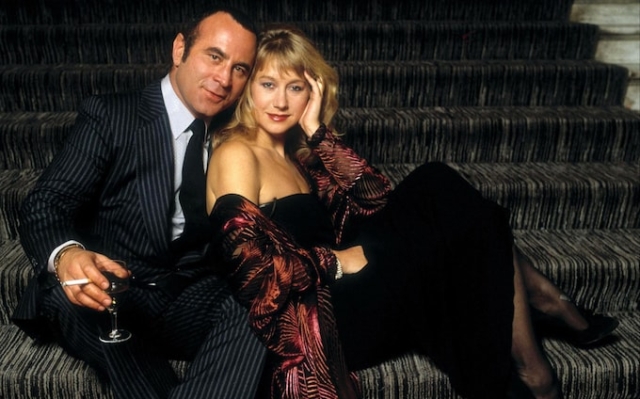 Bob Hoskins and Helen Mirren in a promotional video for The Long Good Friday
Bob Hoskins and Helen Mirren in a promotional video for The Long Good Friday
Bob Hoskins had a desperate, vodka-fuelled idea to save the Long Good Friday. He knew a crank who paid showbiz impresario Lew Grade £10,000.
Grade's production company, Black Lion Films, financed the classic crime film, shot in the summer of 1979. But financiers lost their nerve due to violence between gangsters and the IRA. Grade's company wanted to cut the film, sell it to television, and dub Hoskins' voice to make it more palatable to American audiences. Devilish freedom, as Harold Shand, Hoskins' kingpin turned capitalist, might say.
Nearly two years passed before the filmmakers took The Long Good Friday out of the company's hands and into theaters. «We had a terrible battle with those bastards,» said director John MacKenzie. The film is now available on a limited edition 4K Blu-ray from Arrow Video.
There are many, many colorful stories behind the Long Good Friday. Most of them have to do with the exuberant charisma of Bob Hoskins. For author Robert Sellers, Hoskins's most desperate moment, when he suggested they get rid of the big shot, is the best of all. Sellers details the battle over the release of The Long Good Friday in his book Very Naughty Boys, about George Harrison's HandMade Films, which eventually bought and saved The Long Good Friday.
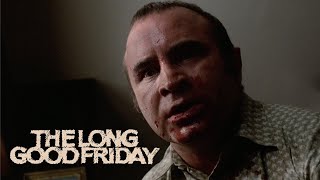
As screenwriter Barry Keefe told Sellers, the four directors sat in their Carnaby Street office — Hoskins, Keefe, Mackenzie and producer Barry Hanson — exhausted and gloomy. It was Christmas and the sound of carols could be heard outside. Hoskins drank vodka, and two poodles sat on his lap. When he suggested they could «destroy» Grade for £2,500 each, Hanson said another member of Grade's family could take his place. “Okay,” said Hoskins, “five thousand each.”
Actor Derek Thompson, who plays Jeff, the smarmy consigliere to crime boss Hoskins, laughs when he hears the story. Thompson went on to play Charlie Fairhead in Casualty and now appears in the second series of BBC police drama Blue Lights. He had also heard many stories about Hoskins. “They are all true!” — he says. “They are all confirmed. There was some kind of magnetism about him. He attracted strange circumstances.”
He adds: “I heard that Hoskins had stolen the original and was walking around the streets of Soho offering it to people, trying to sell the film.”
Sounds like there was something of Harold Shand in the real man. And perhaps unsurprisingly, it's rare to find better casting. “The actor and the role connected instantly,” says Sellers. “Growing up in a tough area of London, Hoskins knew his fair share of villains and this is a revelation to him.”
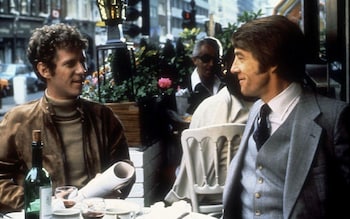 Derek Thompson and Brian Marshall in The Long Good Friday Photo: Alamy
Derek Thompson and Brian Marshall in The Long Good Friday Photo: Alamy
Flanked by the chic and smart Victoria (played by Helen Mirren), Harold Shand is a boy from Stepney who has made it big. “I’m not a politician,” he claims. “I am a businessman with a sense of history. And I’m also a Londoner.” But more importantly the man of the moment: the spirit of Thatcherism was revealed — animated by free enterprise, inflated by national pride.
Margaret Thatcher's government came to power shortly before filming began. Shand anticipates the thirst for wealth and prosperity of the 1980s, self-interest and excess. He is, in the words of Robert Sellers, «the bastard of Margaret Thatcher and Al Capone.»
The Long Good Friday is prophetic to the point of being prophetic. Shand's plans went semi-legal, redeveloping London's docks as part of a «cross-the-ocean» deal with the American mafia — with an eye on making the 1988 Olympics the centerpiece of his capitalist takeover of east London. But while Shand attempted to chat up the mafia over the Easter weekend, the IRA targeted him with a series of bombings and murders.
According to Barry Keeffe, The Long Good Friday was inspired by a variety of things: anger, boredom and dissatisfaction with British gangster films. The idea began as a “Humphrey Bogart film if he were a Cockney” and morphed into “terrorism versus gangsterism” after a night of drinking in an Irish pub in north London. This occurred shortly after the peak of the IRA bombings in England in the 1970s. Keefe saw the band play rebellious songs and burn the Union Jack on stage. Kiff was warned to keep his mouth shut so as not to reveal his London accent.
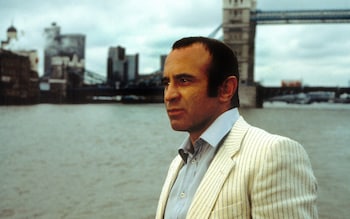 Bob Hoskins in The Long Good Friday By Alami
Bob Hoskins in The Long Good Friday By Alami
First draft, titled «The Paddy Factor», was written, appropriately enough, for Easter. “I always find these vacations boring,” Keefe said. “Four days of nothing.”
The most recognizable IRA man in the film will be played by future 007 agent Pierce Brosnan. He uses his boyish good looks to lure Shand's gay best friend, Colin (Paul Freeman), then stabs him to death, one of the attacks that begins the carnage. Harold is outraged by the apparent brutality of the murder. “Colin would never hurt a fly! Well, only when it was necessary. As Colin's body is quietly whisked away in an ice cream van, Shand drops one of his famous cockney stoppers: “There's a lot of dignity in that, isn't there? It goes away like crimson ripples.”
Forty-five years on, Shand's Cockney-isms seem to be the whole basis of Lock, Stock and Two Smoking Barrels — and every British film about Cockney apes since.
Keefe — also a playwright and journalist — drew on his real-life run-ins with the London underworld. In one of the film's most frighteningly brutal scenes, a gang member is nailed to the floor of a warehouse — a real-life punishment for trespassing on another gang's territory. As an 18-year-old reporter for the Stratford Express, Keefe interviewed a victim of one of these gang crucifixions. “Just chalk it up to an accident of his own making,” the bandaged victim said from his hospital bed with a nod of his head, a wink and silence.
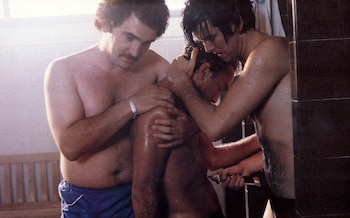 Pierce Brosnan stabs Paul Freeman in The Long Good Friday
Pierce Brosnan stabs Paul Freeman in The Long Good Friday
Kiff once had a risky moment with Ronnie Kray — in the toilets of the Bethnal Green pub. Ronnie stood next to Kiff at the urinal and asked, “What do you think about this?” Keefe, fearing Ronnie's sexual advances, did as he was told and looked down to see what Ronnie had pulled out of his pants. Keefe was relieved to see the gun.
Kiff's creator, Harold Shand, is a generation after the Krays. Under his bandit rule there were “10 years of peace.” Shand is prone to down-to-earth nostalgia for the rough edges of London (“This street used to be nice. Decent families, no scum”), but he is a modern gangster. Its structure is not a gang or even a company, but a “corporation” built on dirty schemers, corrupt officials and sweeping dirty deeds under the carpet. “We can’t let the bombs go off, Harold,” says his beloved bent copper. «We can't have dead bodies.» Medny is more concerned about the appearance of the crime than its reality.
Like many of Britain's great works of art from the early 1980s, The Long Good Friday is an artefact of a cultural, political and economic moment, strongly reflecting the mood of the time. As Derek Thompson says, this is not a Dick Van Dyke version of London: “I think it was Barry Keeffe's idea. That it shouldn't play on the American market, giving you the old-fashioned idea of London with red buses and taxi drivers saying, «Two shillings, chief… you're the real deal, that's it.»
For Harold Shand, Britain has a prosperous future as a leading European nation — with a continent of cash to be had there. “These people deserve something better,” says Shand, looking at London's run-down areas. But Shand confuses decency with wealth — he sees London as a pure commodity. “No other city in the world has, right in its center, such opportunity for profitable progress,” he says in a rousing speech to his consortium of investors. It's a call to the world's hungriest capitalists to invest in what he calls «the new London» from aboard his yacht framed by Tower Bridge. This is the film's only tourist whim: an icon of totemic British pride.
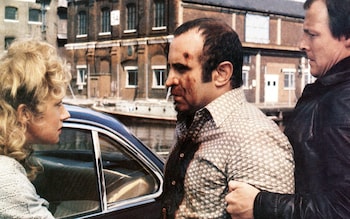 Helen Mirren, Bob Hoskins and Brian Hall in The Long Good Friday Photo: Alamy
Helen Mirren, Bob Hoskins and Brian Hall in The Long Good Friday Photo: Alamy
Mark Duguid's essay included in the Arrow Video set notes that the film shows two sides of London: drunks, abandoned docks and a stinking abattoir; and the luxury of Shand's new London, seen in the casinos, high-end restaurants and on Harold's yacht. It's a conflict between where the villains end up and the fake wealth of their success.
A similar conflict exists with Harold Shand himself. His new London self is on the surface an energetic businessman, wearing Man of Del Monte suits and grandiloquent talk, but underneath is an old-school gangster raging: a bullish force of ever-increasing fury, always threatening to explode and engulf the more presentable option. “He could almost look at the camera and scare you,” Thompson says. The brilliance of Hoskins' performance is that he is in complete control of both halves of Harold Shand.
When the filmmakers pitched the film to Hoskins, he was in a very unusual location in London: a hospital for tropical diseases. Hoskins was about to literally squeeze out a 26-foot tapeworm he picked up while filming Zulu Dawn in South Africa. Other versions of the story say it was 27 feet long. Or even 35 feet. “That tapeworm always gets back on his feet every time I hear that story,” John McKenzie told Neon magazine in a 1999 retrospective.
Robert Sellers describes Hoskins as «bursting through every scene like an Exocet missile.» Hoskins' behind-the-scenes creative energy was much the same. He came up with so many ideas so quickly that the filmmakers sent him on vacation to Greece to get rid of him. On another occasion, Hoskins locked Kiff in his office overnight to ensure he would begin rewriting. “But the best part was that he came back and dropped two packs of cigarettes in the mailbox to encourage me,” Keefe recalled.
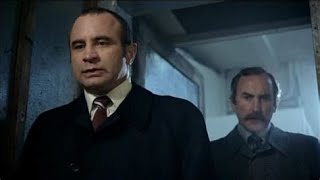
On the set, Hoskins was the head of the breeders. Derek Thompson remembers telling another actor that they used «suppository microphones» for one scene because, Hoskins argued, the sound came out better from inside the actors' rectums. The sound engineer put on a gag and came in one morning with a swab, modified with a mini microphone head, and asked for volunteers to try out the device.
Helen Mirren plays an equally important role in the film as Victoria. Forget Harold's yacht or the HS kimono. Victoria is his most valuable asset. While Shand rushes around London, trying to deal with the IRA, Victoria's job is to talk down the Americans and generally keep its mess under control. The only person the Victorian era fails to charm is Harold's salty mother.
The character, according to Robert Sellers, is “almost Lady Macbeth for the Scottish King Hoskins.” She was originally written as a standard, minor gangster girlfriend — largely ineffectual, with a mouth full of rotten teeth. MacKenzie and Mirren fleshed out the character, but didn't always agree. “I didn’t want to be a stereotype,” Mirren later said. “I argued every line.”
«During filming, Mackenzie had several clashes with the actress, who wanted to make Victoria Shand's equal by going out and killing bad guys,» says Sellers. Shand, however, is more creative than simply destroying his enemies. In the film's most memorable mobster moment, he rounds up rival gangsters and hangs them upside down in a slaughterhouse. They are left hanging out in the cold until someone spills the beans about who is targeting them. “Frostbite or verbal,” Harold demands. British gangster films have been trying to overcome the threat of this scene for 45 years, but none have yet succeeded.
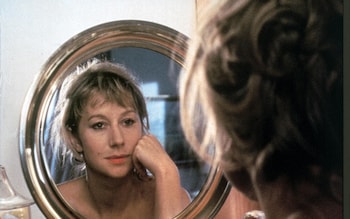 Helen Mirren as Victoria in The Long Good Friday Photo: Alamy
Helen Mirren as Victoria in The Long Good Friday Photo: Alamy
These scenes were filmed in an active Jewish slaughterhouse where the animals were hung up and bled to death. Opposite the yard there was a glue factory where carcasses were melted down. McKenzie claimed he could still smell it 20 years later.
“It was damn cold!” Derek Thompson says. “That's why I wore my big coat. I brought this. All the guys in two-piece suits were thinking, why didn’t I bring a scarf?! Sellers' book notes that one of the villains nearly lost consciousness from being hung upside down. The ladders were brought in so they could be taken off the hook literally between takes.
Thompson laughs at the suggestion that there were a number of Cockney villains among the supporting cast. “They were all cockney villains!” He says. Villains brought in through Kiff's connections offered clues. “John, not that I’ve ever done this,” they told the director, “but if you’re going to stab somebody, you wouldn’t do it like that.”
Thompson's character, Jeff, suffers from severe violence. Jeff's fate is inevitable from the moment he attacks Victoria. “I want to lick every inch of you,” he says—a clear sign that he’s about to come off. “This line is right on target,” Thompson says.
Jeff is educated — but did not go through a rigorous school — and is too self-confident. He is full of ambitions that will definitely lead him to death. Thompson describes how he carried himself with his shoulders: Jeff literally puffs himself up in front of Shand, boasting that he's tough because he's «on the winning side,» but collapses as soon as Shand turns his back. It becomes tasty only when their enemies are already tied up, hanging upside down.
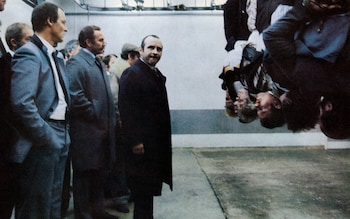 Bob Hoskins in The Long Good Friday Posted by Alami
Bob Hoskins in The Long Good Friday Posted by Alami
When Geoff confesses that he is responsible for the IRA attacks, Shand plunges a broken bottle into Geoff's jugular vein — a moment of such excruciating violence that even Shand is taken by surprise. Jeff dies in his arms, blood pouring from his neck. A medic on the set advised Thompson would have a convulsion, which is what actually happened. “The assumption was that you would start shaking uncontrollably,” Thompson says. “It seems appropriate and all the more pathetic.”
In an earlier version, Shand pulled two swords from the yacht's bulkhead and cut off Jeff's head. «That was the plan!» says Thompson. “It was great to read—Harold threw his hands up and grabbed the crossed sabers, one in each hand. He struck with one, then with another, and took the head clean off. But John and Barry thought it had driven Hoskins cruelly.»
The tube from which the blood sprayed didn't work at first, so the scene was filmed over and over, staining the wardrobe's stock of shirts with fake burgundy. «Eventually they started knocking on doors and saying, 'Do you have white shirts with 16-inch collars?' We passed the 40 we brought with us!’” Thompson was unable to see The Police concert because he left his ticket in one of his shirts and it became soaked in blood. “I still keep it as a keepsake,” he says.
This episode says more about Harold Shand than just his capacity for violence. It is not the betrayal that fuels his rage, but Geoff's assumption that Harold is not big enough to stand up to the IRA and that he will have to share London with them. “This is my estate!” Shand barks.
The IRA campaign even makes the Mafia nervous, which Shand believes shows that Americans lack the necessary drive, vitality and Dunkirk spirit. Shand's nationalism is not meant to be glorified, but you can't help but feel a glimmer of British pride as he speaks the words of American mobsters. «Mafia? I … them…!
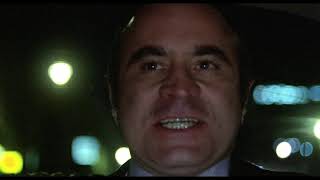
The most iconic moment comes immediately after this. Shand is surprised by his IRA kidnappers and taken away — presumably to his death — in his own car. The camera lingers on Hoskins, with only one shot, for a minute and a half as Francis Monkman's Sweeney-esque theme flares up. Pierce Brosnan sits opposite with a gun, although they never met — their shots had to be filmed separately. What Hoskins conveys in this shot, using only his bottom teeth at points, is simply masterful. Harold has been caught and he knows it. He's almost impressed. “He's the one saying, 'Damn good job, I wouldn't have thought of that on my own,'” Thompson says. “That's why he's a great actor. Normally you wouldn't take that from a script.» There was talk of a sequel in which it would be revealed that Shand escaped. What a mistake it would be to rob that final scene of its power and suspense.
The IRA story made Lew Grade's company nervous, although the filmmakers later discovered that it was not Grade himself (in fact, he liked the film), but his «henchmen». They called it IRA propaganda and feared that the IRA would bomb cinemas. Keefe retorted: «Well, wait a minute, if this is IRA propaganda, why are they going to blow up your cinemas showing it?» »
Hoskins and Mirren championed it at film festivals. According to Very Naughty Boys, it was Monty Python's Eric Idle who saw it and recommended that HandMade Films (who produced Life of Brian) pick it up for distribution. HandMade bought The Long Good Friday for £700,000, £200,000 below its budget. “Ironically, George Harrison, co-founder of HandMade and former Beatle, hated the movie and was upset that they bought it,” says Sellers. «He thought it was too cruel.»
Published in February 1981, The Long Good Friday was a hit. “It was so popular that there were advertisers in the West End selling tickets for double the price, and later even bootleg videos,” adds Sellers.
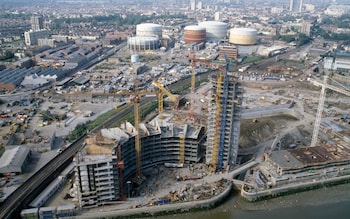 London's Canary Wharf is being rebuilt in 1986. Photo: Popperfoto via Getty Images
London's Canary Wharf is being rebuilt in 1986. Photo: Popperfoto via Getty Images
Between the behind-the-scenes stories, the sheer power of Hoskins' performance and the ongoing political resonance, it's hard to see the Lasting Good. Friday is far from being one of the greatest British films of all time, if not the greatest.
And Harold Shand's plans were connected with money. London's Docklands has been redeveloped — and partly with questionable money. As revealed in last year's BBC drama Gold, the £26 million profits from Brink's-Mat were laundered through an investment in London's docklands. And East London did host the Olympics, albeit 24 years later than Shand had expected.
In Ghost Milk, East London writer Iain Sinclair compares Shand's new London to the real-life regeneration of Stratford for the 2012 Olympics, which Sinclair plans to upend the community for the sake of corporate interests and profit. Shand would surely have enjoyed the 2012 opening ceremony and the sense of national pride it generated — as much as he did on home turf. Shand may feel the same about the rest of London, where every abandoned warehouse and unused patch of wasteland has been snapped up by money-hungry developers.
Harold Shand was more than a harbinger of Thatcherism in the 1980s, but also for the next 45 years. From this perspective, Long Good Friday is a battle for the soul of Britain. “But basically,” says Derek Thompson, “it was just a damn great gangster movie.”
The Long Good Friday is now available on Blu-ray 4K UHD from Arrow Video



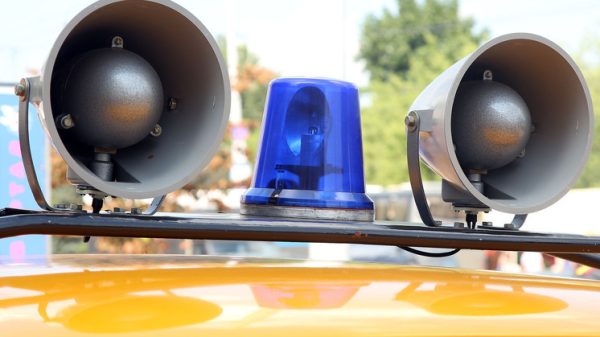
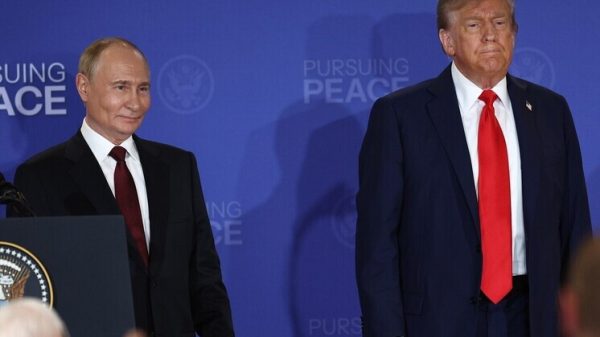
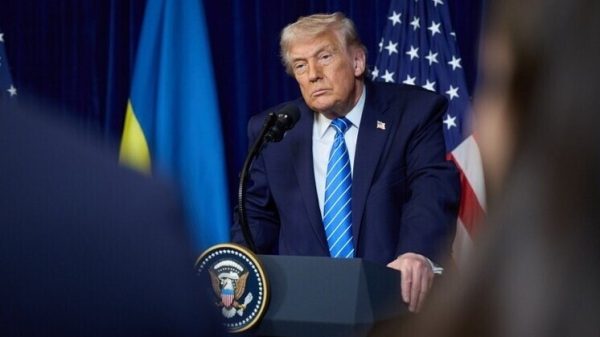

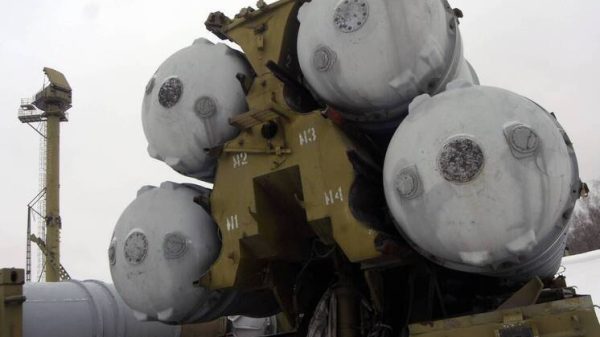
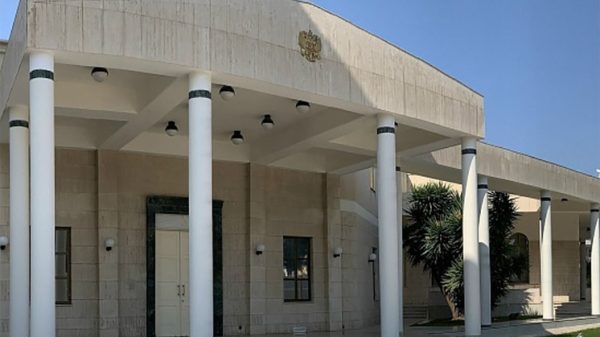
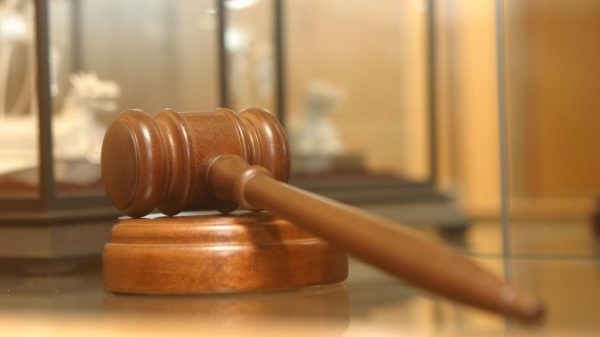

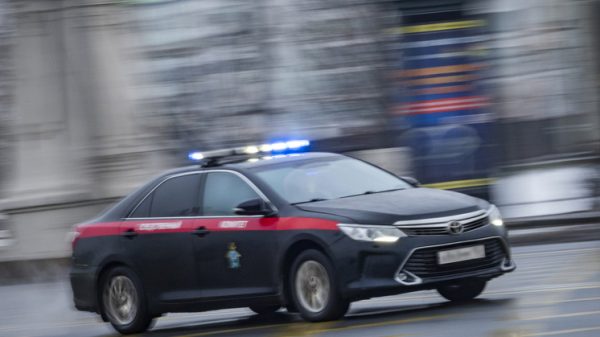

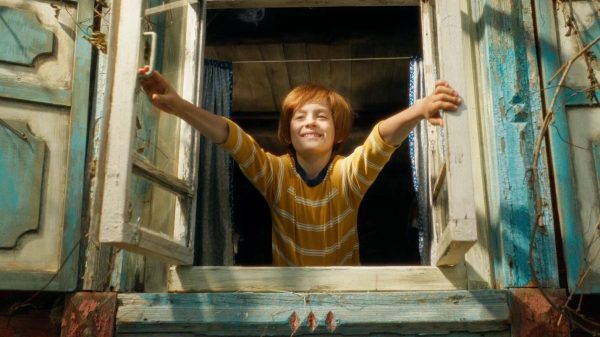


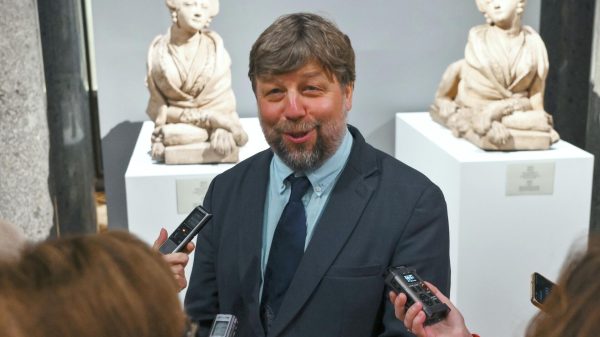


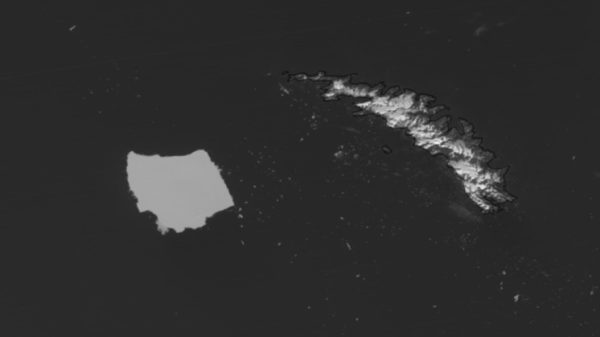






































Свежие комментарии